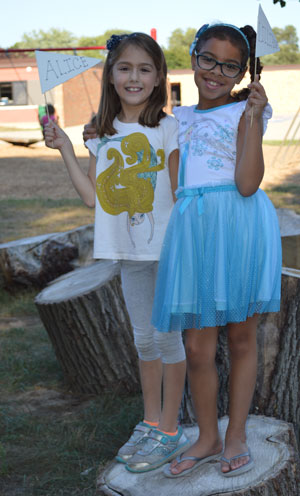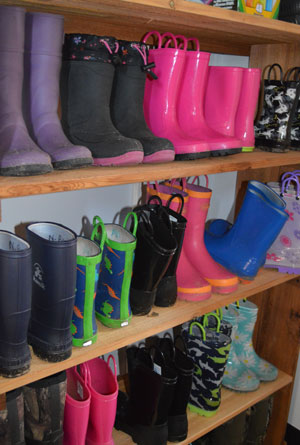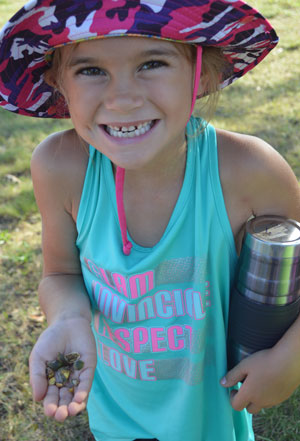Rahlee Blom was so excited to start school this year, he and his mom rode their bikes to East Oakview Elementary the last week of summer break to scope it out.
“He saw this space that looked like a garden and was like, ‘Do you think we’ll get to garden?’” recalled Becky Blom. “And I told him, ‘I’ll bet you will.’”
Amy Medendorp is hoping son Logan will combine his family’s passion for being outdoors with a renewed ability to focus in class.
“When they’re tired and dirty when they come home, that’s a good day,” she said.

This year, Logan and Rahlee are part of a group of 46 students from throughout the district who are reporting to a pair of portable classrooms at East Oakview. At least half of most every school day will be spent outdoors.
Field School is aimed at offering an immersive, outdoor learning environment for students in kindergarten through third grade. The goal is to foster mastery of core subjects and to encourage curiosity, stewardship, community, leadership and adventure.
The 22-student kindergarten and first-grade class is led by Jenna Rykse, and the 24-student second- and third-grade class is led by Matt Fenech. Rykse has a science background and previously served as a literacy expert for the district, and Fenech was a third-grade teacher. Both have attended additional outdoor environmental education training.
Rich Youngberg, the district’s outdoor learning coordinator, will expand outdoor curriculum throughout the district. The district already offers an after-school Adventure Leadership Club at Highlands Middle School, and a fly-fishing club at the high school.

Noticing the World Around Them
On a recent morning, both classes pulled on soggy weather boots and headed outdoors soon after arriving.
“Remember, if we collect living things in the morning, we set them free at lunch,” Rykse reminded her students.
With plastic bags, magnifying glasses and seemingly boundless energy on one of summer’s final humid days, they made their way to a field and wooded area beyond the soccer and baseball fields. There, they spent an hour collecting things found in nature, which they would later examine, discuss, possibly measure and write about.
Besides exploring nature, the hour also included, for some students, impromptu fort building, walking stick finding, tree limb transporting and even a little trash collecting.
“For some it’s just figuring out how to occupy their time in the outdoors, even what to do when they are given unstructured play time,” Rykse said. “Some aren’t used to that.”

Third-grader Lennie Reckner and her assignment partner, Mia James, seemed to have the task well in hand.
“We’re collecting evidence of nature, then we’re going to glue them to a poster,” Lennie said as she pulled from her plastic bag a stick, a “mushy mushroom” and a lavender flower that she declared “looks kind of like a weed.”
The Whole Child
This year, there were nearly twice the number of applicants for Field School as spots available. Selection was mostly random, said said Liz Cotter, Northview’s director of people, organization and accreditation, with the exception of balancing grade levels and elementary representation.

“We were very pleased and somewhat surprised by the level of enthusiasm.” She said the hope is to open the program to other grades in future years, and to eventually house it at other district schools as well.
“We know that connecting to the natural world has so many benefits,” Cotter said. “In Field School we’ll combine relevant and rigorous learning in addition to social and emotional skills.”
Students will hit the same curriculum marks as other elementary students, she said, “but in a different way. It’s our job as educators to keep moving the ball forward, to keep looking around the corner, finding new ways to engage and tend to the whole child.”















